The first time I heard about cost disease it was used to explain why it was insane that jobs with low productivity wanted the same pay as jobs with high productivity. For example People in arts > Software developers > Business leaders.
All are equally talented, but they are on separate scales on their productivity contribution to the world.
What is unusual is how cost disease has spread into the commodities that we need for life – healthcare, education, and infrastructure. We see the price of semiconductors (the tech that powers every computation device) go down while the price of other things shoots up!
I have a lot of articles in my Pocket, so on a trip to Nairobi I took time to read this post, considerations on cost disease. I liked the essay so much that I decided to summarize all I learned about the topic and explain the concept as best as I can using screenshots from the original essay. I strongly suggest you read it if you have time.
The essay touched on several industries and demonstrated how prices had risen in certain industries even when there was no corresponding improvement in the results or pay.
How cost disease affects education
Adjusted for inflation, high school student education spending in the USA has increased 2.5X in the last 40 years, but high school students’ test scores have not improved. Reading scores went from 285 in 1971 to 287 today – a difference of 0.7% but the costs of sending kids to high school grew by 250% adjusted for inflation.
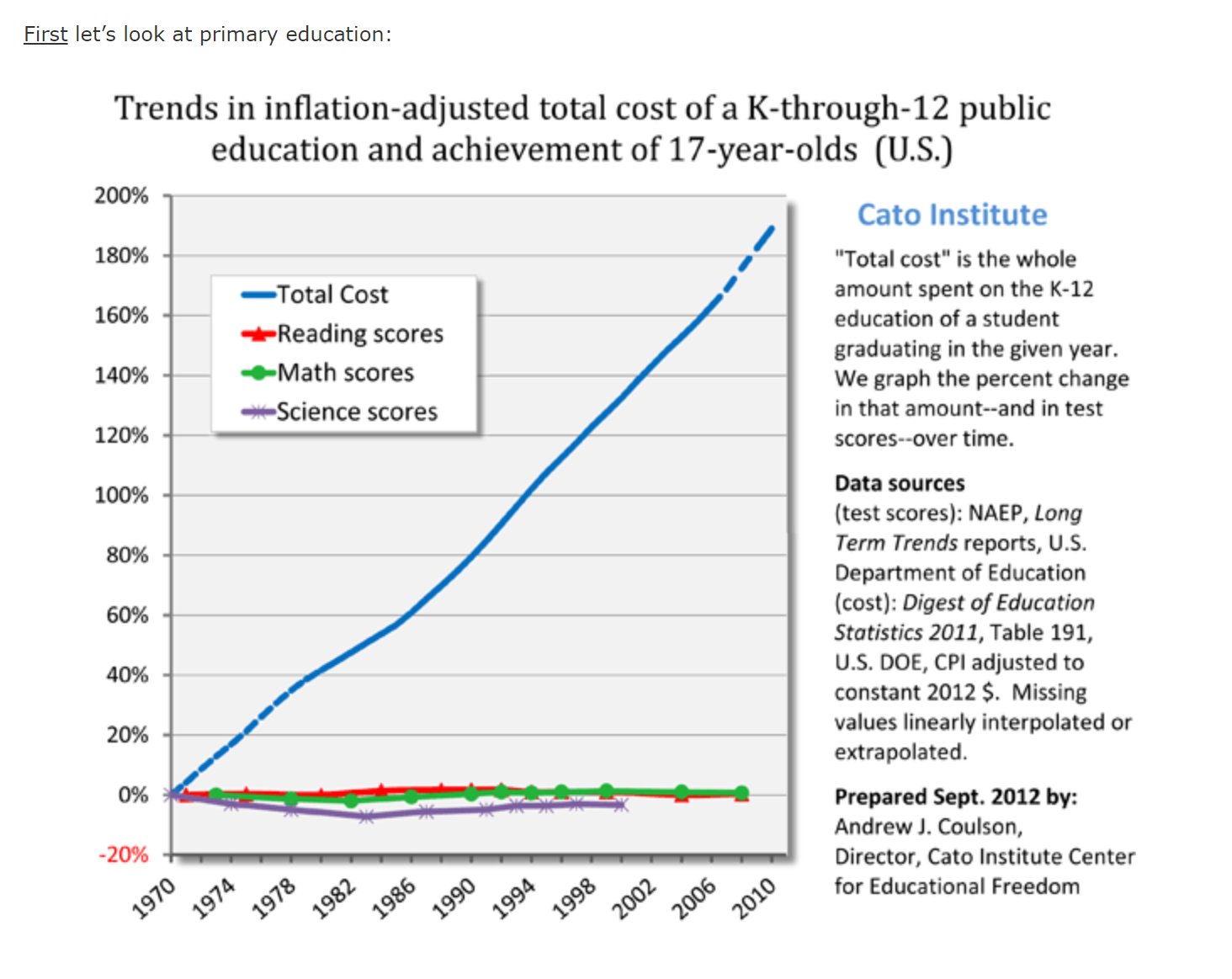
So why are parents paying more?
To paint a more vivid picture. Kids in the United States are not performing any better than kids that schooled in 1975. Knowing this, will you choose to send your child to a school that gave the 1975 quality of education and save the extra money, about $5000 per school year, that you are paying in 2018? Or will you pay the extra $5,000 fee even when you cannot see the additional value it provides?
In Universities, the difference is a lot worse. Inflation-adjusted, 1980 students paid $2,000 per year. While 2015 students pay $20,000 per year.
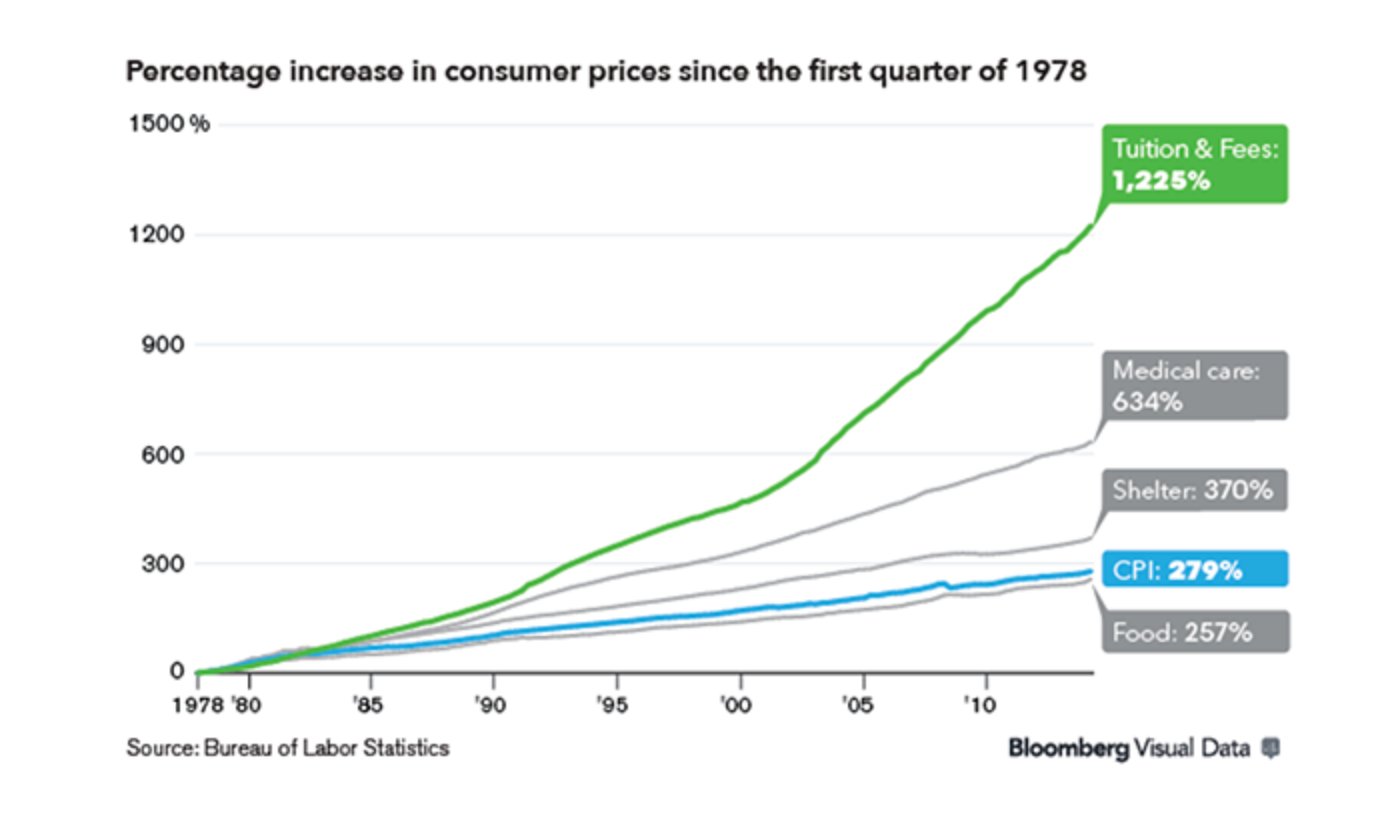
Again, knowing that both decades (1980s and 2010s) give a satisfying and probably the same level of education, will you choose to pay $18,000 extra every year to get 2015 quality of education or save that money and get 1980 quality of education?
How cost disease affects healthcare and other industries
In the USA, human life expectancy has not increased by a lot since 1985, yet Americans pay a lot more for healthcare today than they did in the past for arguably worse health care. It is worth considering that most of the advancements in healthcare has come through technology, which is notorious for saving costs, yet none of the cost savings from the adoption of technology has gone into subsidizing health care costs.
Many studies conducted also show that significantly boosting the healthcare budget did not do much to improve life expectancy.
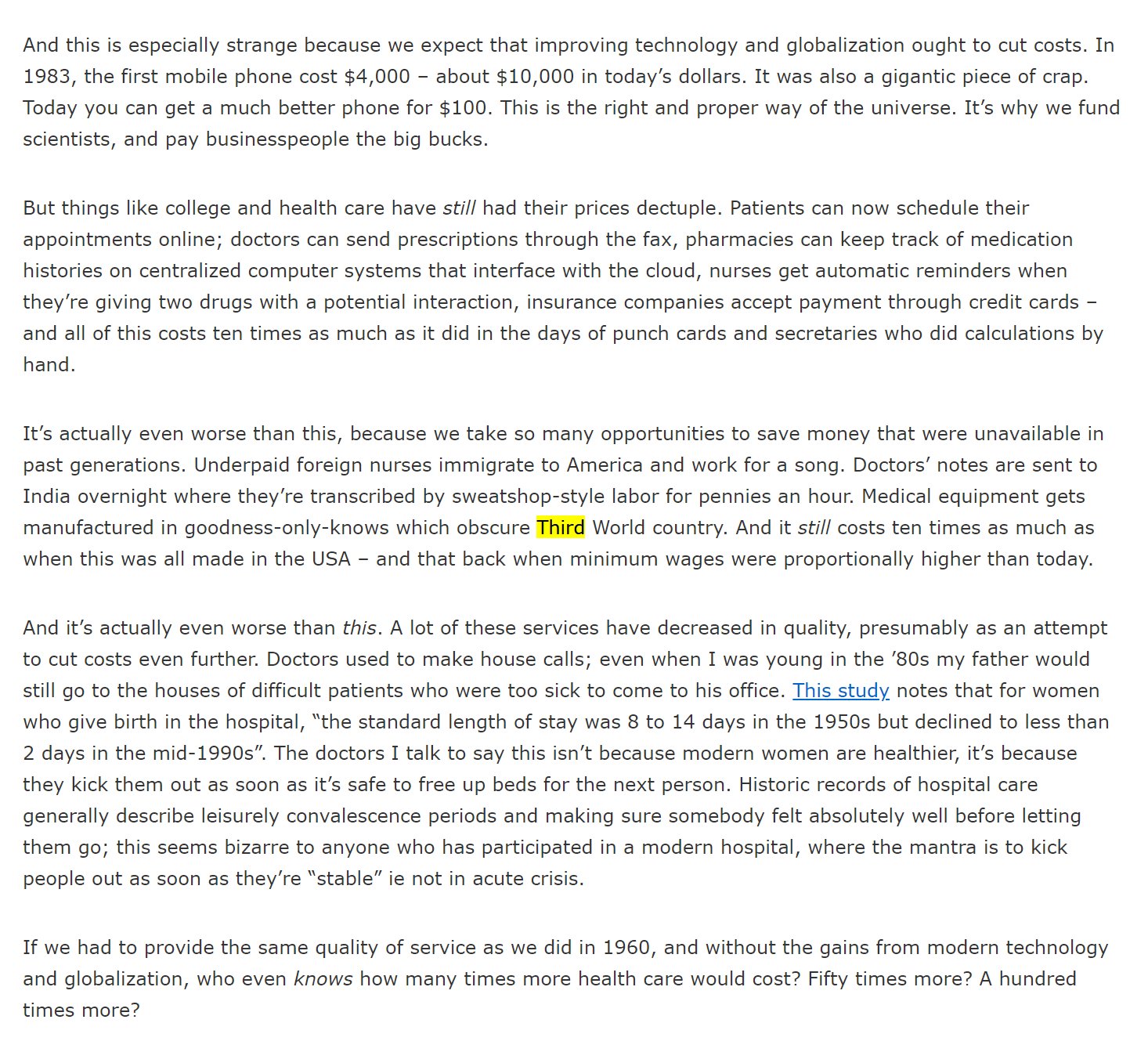
This trend also appears in real estate and infrastructure. By now, you get the point. There was no productivity boost, but costs went up in multi-folds.
Where is all this cost disease coming from
My first sentence explained that people in the arts cannot get equal pay as software developers because they have not been substantially more productive than they were 100 years ago.
Let us imagine a town where residents can only be factory workers or singers. Suddenly. the factory gets productive, sells more goods, makes more money and pays more. Soon, many singers want to be factory workers which drives up the price of singers as there are fewer singers and the opera has to charge high ticket prices to pay them.
The idea above should be true and explain cost disease in older industries because more people want to work in finance or tech and fewer people want to be teachers or construction workers. But in the real economic world, it is untrue. For instance: healthcare workers and teachers are not getting better pay. And teacher inflation-adjusted wages in the US has remained flat since 1960.


It would make ideal sense if inflation-adjusted salaries increased as cost disease crept into these industries that do not have higher productivity. But that is not happening.
The plot twist is that these workers are not doing less work either or enjoying great work environments according to these headlines from NPR (Teachers are stressed and that should stress us all), WSJ (Why doctors are sick of their profession), and Vox (Only 6% of doctors are happy with their jobs) . So why are their inflation-adjusted salaries stagnant/declining?
What is driving cost disease
Scott Alexander, the author of the essay tried to give several reasons for this cost disease but each was met with a heavy rebuttal. The true insights are in reading his theses and counter-arguments. Again, read it if you can – https://slatestarcodex.com/2017/02/09/considerations-on-cost-disease/
What I most agree with is the thesis on how zero-sum activities drive up prices. That is, adding a cost because the cost can be added. E.g: a baker selling a cake at $100 when the same cake can be sold at $50 still with a good profit margin. Capitalist behavior will always force prices to go up. As soon as everyone else recognizes that someone else gets away with charging a premium on the same service or product you sell, price tends to shoot up.
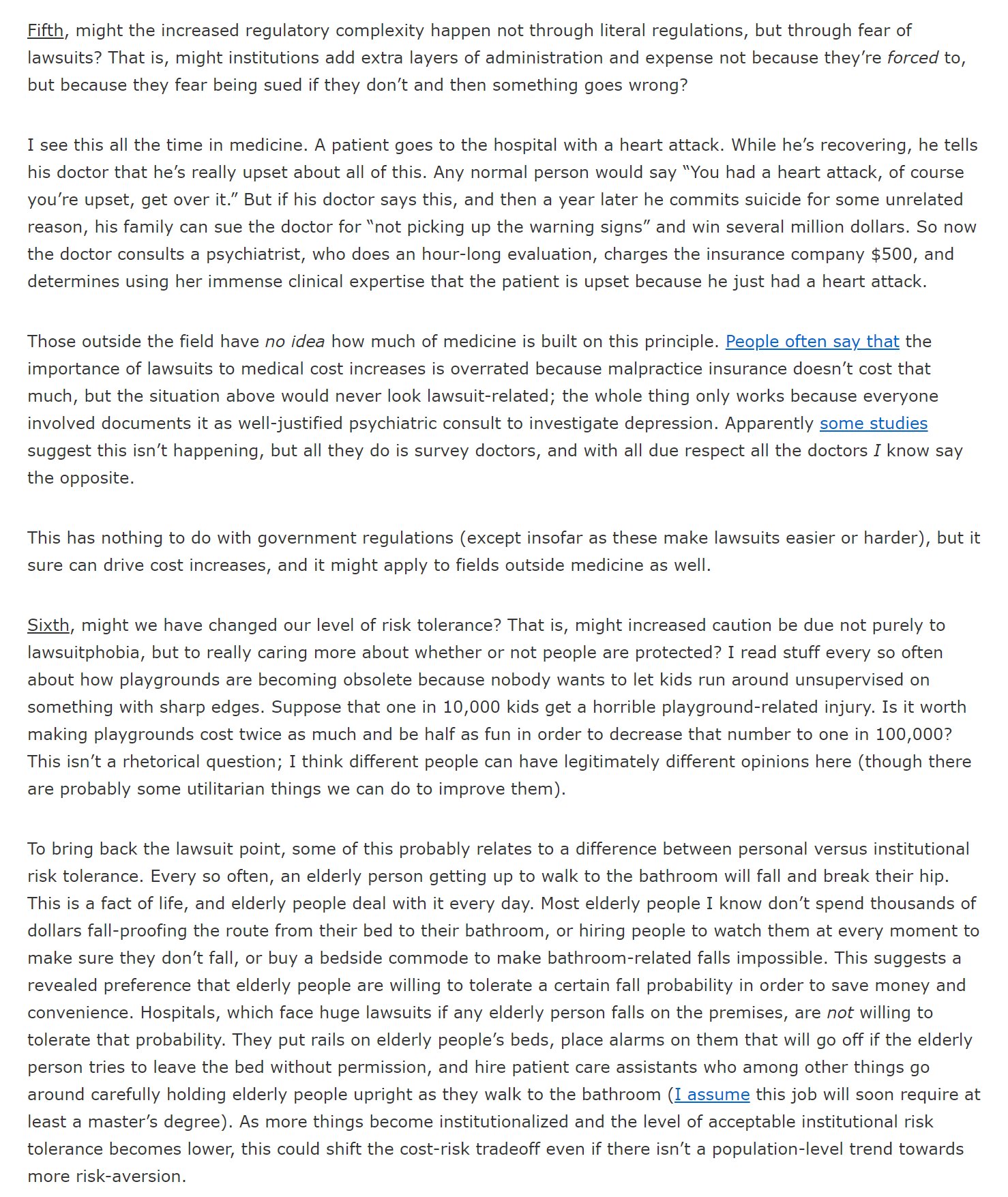
Final notes from Scott Alexander discussing how wrong Maynard Keynes’ predictions were. What pricked at me is this – if costs rise faster than salaries can, we will end up leaving in a worse world than our parents even when we have all the technology.
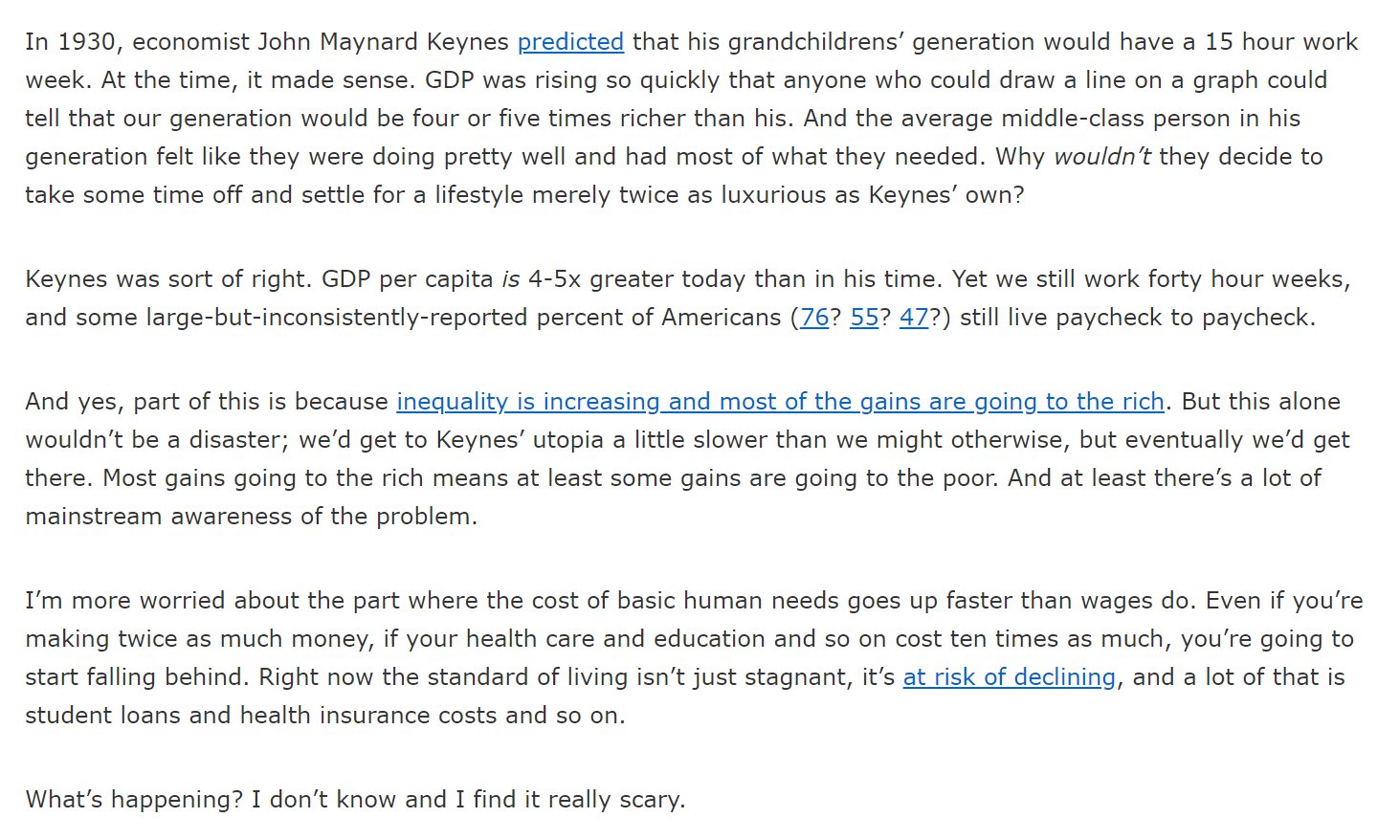
My final take is that economics on a macro scale will find a way to work itself out. And I literally cannot wait to see the wide-spread use of AI on our economy. Morgan Housel wrote an excellent piece that demonstrates how the economy will always take care of itself – How this all happened. I also read it on my way to Nairobi; it was a pleasant journey until I got to immigration.
If you like my content, I run a newsletter where I share my raw ideas and solicit feedback from my subscribers. I encourage you to subscribe. If you do not like my content, still subscribe so that you can give feedback and help me become better. I cover ideas on decision making, strategy, the way the world works, marketing operations, business operations, and experiments with my life.
Sign up here: https://yemijohnson.substack.com/p/coming-soon
If you want to work with me, click here.

[…] If you liked this. please read my post on cost disease. […]
I had to come back to read this again. Humans continue to drive cost up because we can even though lives are not necessarily improving or salaries increasing. Will the economy always sort itself out tho…